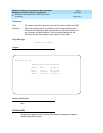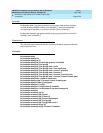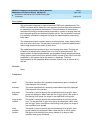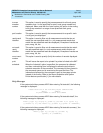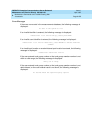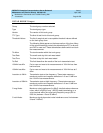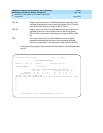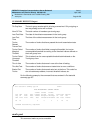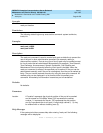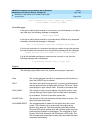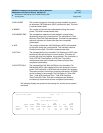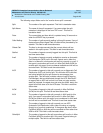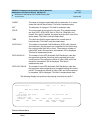
DEFINITY Enterprise Communications Server Release 5
Maintenance and Test for R5vs/si
555-230-123
Issue 1
April 1997
Maintenance Commands and Trouble-Clearing Aids
Page 8-239mark port
8
Synopsis
mark port location
Permissions
The following default logins may execute this command: system technician,
inads, init.
Examples
mark port 1c0208
mark port 2a1001
Description
The mark port command is used to mark a faulty port as defective to prevent the
use of the port in other administrative operations (for example, adding a
data-module or station). Ports on any type of circuit pack may be marked except
for circuit packs that are administered automatically (for example, Tone Detector,
Tone Generator, Announcement, Speech Synthesizer, Call Classifier and
Maintenance/Test circuit packs) when the circuit pack is installed. When the
mark port command is entered, the specified port is marked. If the port can be
administered manually, and if the port is not assigned, then the port is marked as
faulty. The port can be restored to service by using the clear port command. All
marked ports can be displayed in a list format via the list marked-ports
command. All marked port information is saved as part of translations.
Defaults
No defaults.
Parameters
Help Messages
If the system technician presses help after entering "mark port" the following
message will be displayed:
Enter 7 character port number
location A "location" represents the physical position of the port to be marked
and is entered as "UUcSSpp" where "UU" represents the cabinet
number, "c" represents the carrier, "SS" represents the slot position,
and "pp" represents the circuit (port). A single digit cabinet (1 - 3) may
be entered with or without a leading zero (0).



